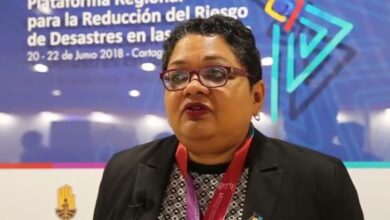WASHINGTON, DC (CMC) — The Pan American Health Organisation (PAHO) says antiretroviral treatment for people living with HIV/AIDS is increasing in Latin America and the Caribbean.
PAHO said that nearly 600,000 more people are receiving antiretroviral treatment for HIV in the region than in 2003.
PAHO released the figures ahead of World AIDS Day, December 1.
PAHO's theme for World AIDS Day this year is 'Close the gap for an AIDS-free generation'.
It said the goal is to bridge the gap between people who have access to HIV prevention, treatment, care, and support services and those who are being left behind.
“Over the past decade, countries in Latin America and the Caribbean have increased access to health services needed by people with HIV, including medicines,” said PAHO's Dominican-born Director Dr Carissa Etienne.
“Controlling the epidemic by 2030 would be possible if countries implement a combined prevention strategy and if everyone knows their HIV status, gets the treatment they need, and lives free of stigma and discrimination,” she added.
The 2014 PAHO/WHO report 'Antiretroviral Treatment in the Spotlight: A Public Health Analysis in Latin America and the Caribbean', reveals that the number of people receiving antiretroviral treatment in Latin America and the Caribbean increased from an estimated 210,000 in 2003 to 795,000 in 2013, representing 56 per cent of those who need treatment and 44 per cent of all people with HIV.
“We still face a gap that we urgently need to close. The challenge now is to make further progress and ensure we do not backslide on our achievements so far,” Dr Etienne said.
In 2013, 106,000 people became newly infected with HIV in Latin America and the Caribbean, nine per cent less than in 2003.
PAHO said new infections could be reduced even more through the implementation of a prevention strategy that combines evidence-based services and interventions based on the needs of those they serve.
These interventions range from the distribution of condoms and information on HIV to offering HIV testing and timely treatment, among others, PAHO said.
Just as new infections have declined, so have HIV deaths, PAHO said, revealing that, last year, 58,000 people in the region died from HIV, a 40 per cent decline since 2003.
“Timely treatment is fundamental for saving the lives of people who contract HIV and to prevent transmission to others. Providing testing and counselling together is a crucial strategy to link people who have the virus with comprehensive health care services,” said Massimo Ghidinelli, chief of PAHO's HIV/AIDS, STI and Hepatitis Unit.
“Simplifying treatment regimens can help reduce the emergence of resistance and adverse side effects and help keep medications effective,” he added.
The number of mothers receiving treatment also increased significantly, according to preliminary data from PAHO and the United Nations Children's Fund (UNICEF).
In 2010, PAHO said fewer than 59 per cent of pregnant women with HIV received treatment.
In 2013, this proportion reached 93 per cent, close to the 95 per cent target adopted by the region's countries for 2015, PAHO said.
The proportion of children 14 and under with HIV who are receiving treatment reached 51 per cent last year. Some 52,000 children in the region are believed to be living with the virus.
In Latin America and the Caribbean, three in 10 people with HIV are unaware that they have the virus, and 35 per cent of new cases are diagnosed late, impeding timely treatment, according to PAHO.
The new PAHO report is the region's first to present this type of data.
PAHO said World AIDS Day provides an opportunity to disseminate information and stimulate progress in prevention, treatment and care for people with HIV in countries with high prevalence and throughout the world.






